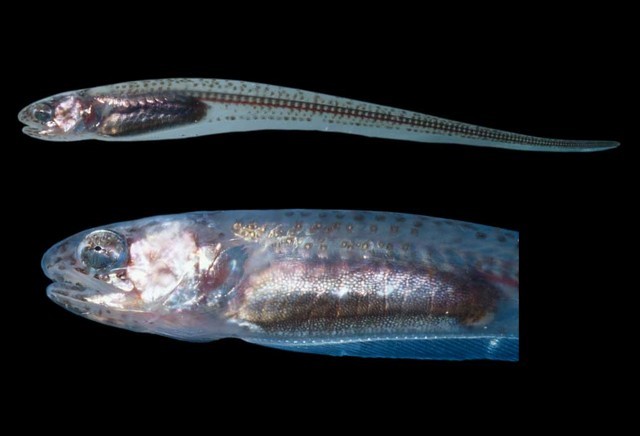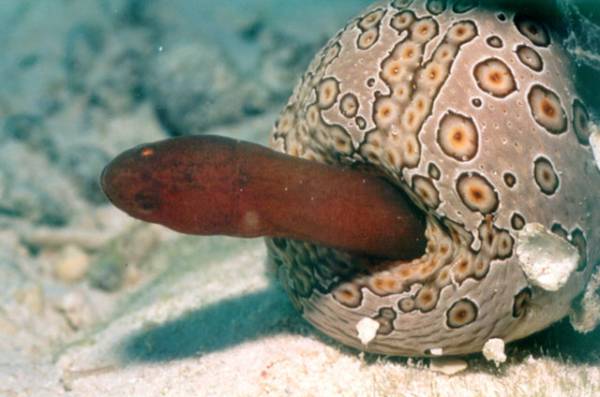More poor unfortunates…
If you thought the fat innkeeper had a raw deal (see my last post), then consider the fish in the family carapidae, commonly known as pearlfish. Elegant name, but wait until you find out how they live. This is what they look like:

Opportunities exist everywhere in nature and if there’s a niche to be exploited some manner of organism will exploit it. The opportunity in this case is up the arse of various marine invertebrates and this is where pearlfish live and sometimes feed. I use the term arse, but technically these fish gain access to their hideaway through the aperture known as the cloaca (Latin for sewer) – most animals have one (mammals being the notable exception) and it is the common opening for the reproductive, digestive and excretory tracts. With the technicalities over let’s keep to the term ‘arse’.
The animals that have the honour of being violated by these tiny fish are things like starfish, sea urchins and sea cucumbers. The relationship of pearlfish with the latter group is particularly interesting and it seems that pearlfish have symbiotic and even parasitic relationships with these peculiar, sedentary animals. Just how a pearlfish gets inside a sea cucumber is bizarre because it’s effectively let in. The fish knocks and pecks the sea cucumber’s arse and it’s permitted entry. Typically, it wriggles in tail first, but they also go in head first and make for the breathing apparatus of the sea cucumber – structures known as respiratory trees. Some types of pearlfish appear to use sea cucumbers simply as convenient refuges as they frequently leave their living lodgings to forage and scout for mates on the sea bed, while there are other species (e.g. Encheliophis boraborensis) that rarely leave once they’ve gained entry. It’s likely these squatters are parasites that nibble their host’s respiratory trees and reproductive organs. Ghoulishly, these likely parasites have been observed in captivity eating they’re way out of their host instead of using the normal exit.
There is still lots to find out about these tiny and somewhat unfortunate fish, but their way of life is intriguing as parasitic relationships are typically invertebrates living at the expense of other invertebrates as well as vertebrates. I can’t think of any other example where the tables have been turned like they have with the pearlfish and sea cucumbers.
How long have pearlfish and their ancestors been sneaking up the tradesmen’s entrance of marine invertebrates? Their appearance alone suggests it is a very long time – many millions of year – as they’ve evolved a form that allows them to squeeze in and out of tight openings, they’ve all but lost many of their fins and their anus has migrated forward so that’s now near their throat. This novel anal arrangement allows them to empty their own digestive tract when they’ve got their head poking from their host on the look out for food and mates – a position these fish often adopt in the wild:

As you can see, pearlfish have a remarkable, albiet rather unfortunate way of life; however, their long-suffering hosts, the sea cucumbers, are also unfortunate, but in very different ways…
You can find out about other bizarre animals like the pearlfish in my book, Extraordinary Animals.
Leave a Reply